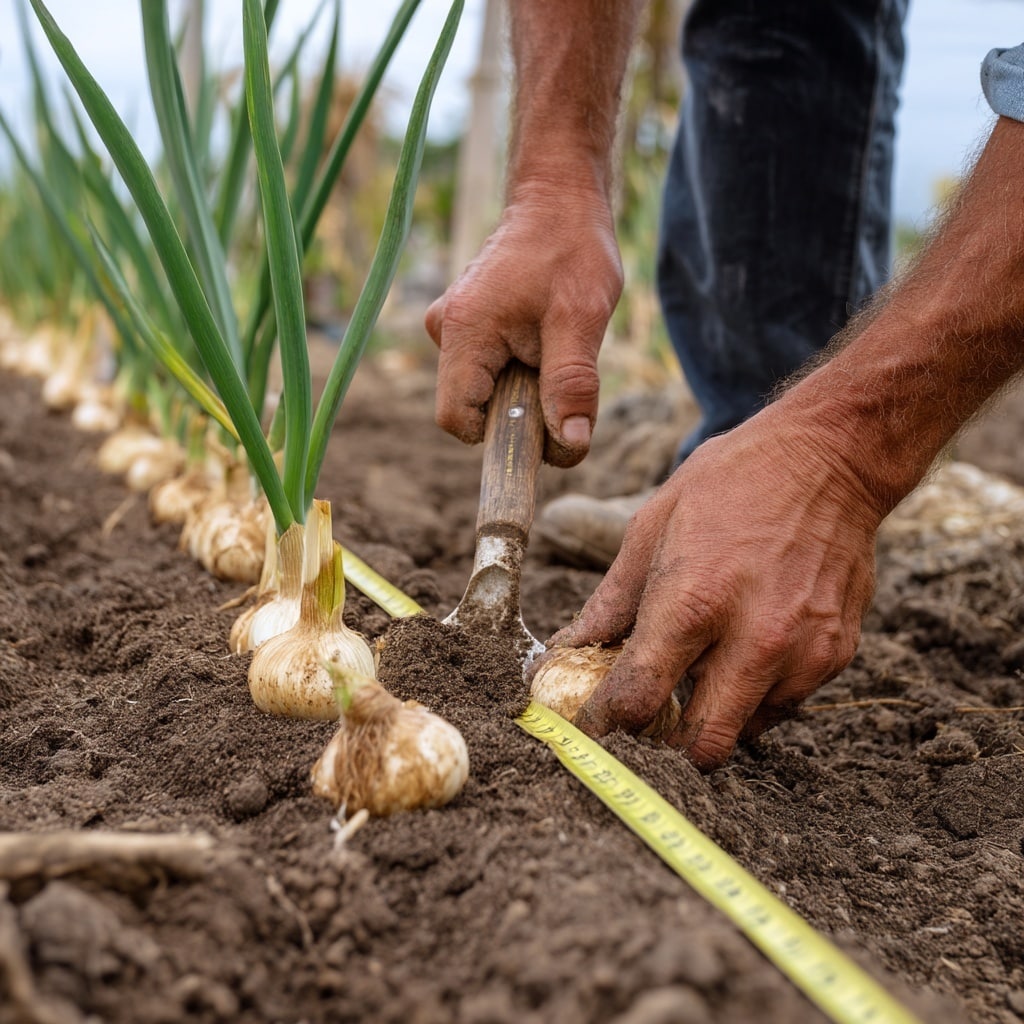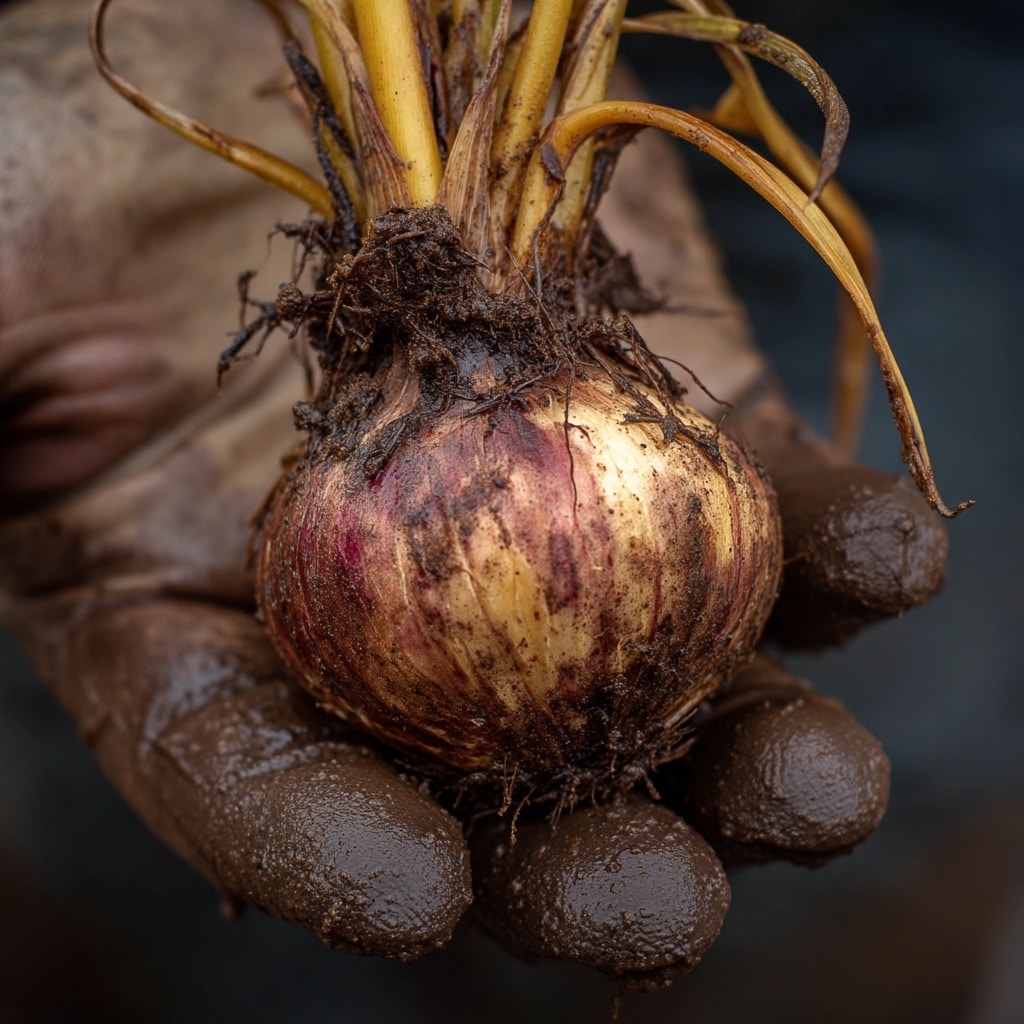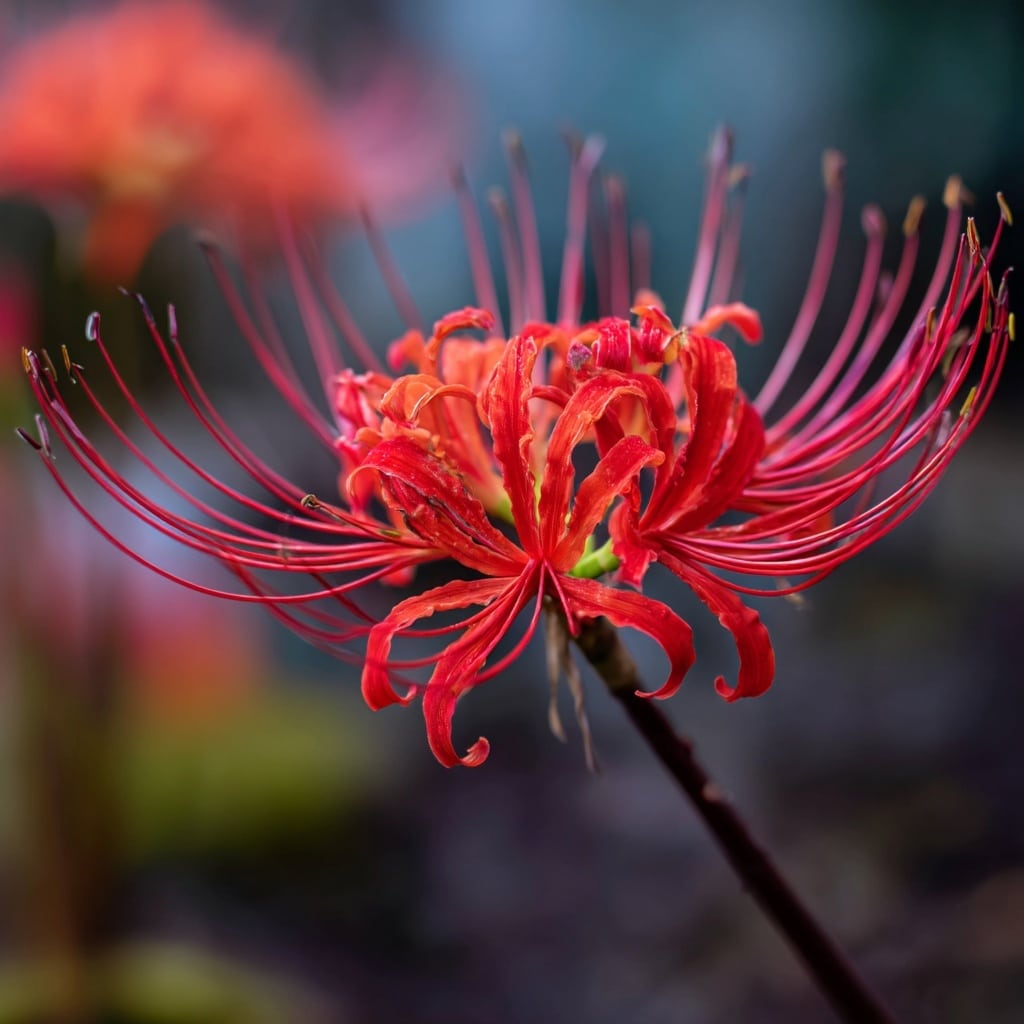Spider lily is a striking late-summer bulb that brings dramatic color and structure to the garden. With its vivid red blooms shooting from seemingly bare ground, the plant delivers a bold statement just when many summer flowers are fading. In this article, we’ll walk through how to successfully grow and care for the plant commonly called the red spider lily (scientific name: Lycoris radiata), including planting, maintenance, design uses and common questions—so you can enjoy its unique beauty in your garden.
Table of Contents
Plant Characteristics & Identification
The spider lily (Lycoris radiata) is a bulbous perennial known for its dramatic, spidery flowers that bloom in late summer or early fall. Each flower cluster features long, curling stamens that radiate outward, creating a delicate, web-like appearance—hence the name “spider lily.”
The blooms appear before the leaves, bursting straight from the soil on tall, leafless stems. After flowering, the bright green, strap-like foliage emerges and persists through winter before dying back in spring. This reversed growth cycle gives the spider lily its nickname “hurricane lily,” as its flowers often appear after summer storms.
- Scientific Name: Lycoris radiata
- Common Names: Red Spider Lily, Hurricane Lily, Resurrection Lily
- Plant Type: Perennial bulb
- Bloom Time: Late summer to early fall
- Flower Color: Brilliant scarlet red
- Foliage: Narrow, glossy green leaves appearing post-bloom
- Mature Height: 12–24 inches
- Native Range: China, Japan, and Korea, naturalized in the southern United States
This plant’s vibrant flowers and unique growth pattern make it an excellent choice for gardeners looking to add late-season color and visual intrigue to their landscapes.
Growth Requirements (Sun, Soil, Water)

The spider lily thrives best when given the right mix of sunlight, soil, and moisture. Though hardy and adaptable, meeting its preferred growing conditions ensures stronger blooms and healthier plants year after year.
☀️ Sunlight
Spider lilies perform best in full sun to partial shade. In cooler climates, full sun promotes vibrant flowering, while in warmer areas, a little afternoon shade helps prevent stress. Ideally, they should receive at least 4–6 hours of direct sunlight daily.
🌱 Soil
These bulbs prefer well-draining soil enriched with organic matter. Sandy loam or loamy soil types are ideal. To improve heavy clay soil, mix in compost or sand to enhance aeration and drainage. Poorly drained soil can cause bulb rot, which is one of the few issues this otherwise low-maintenance plant faces.
💧 Watering
Spider lilies need moderate watering. Keep the soil lightly moist during active growth and flowering. Once the foliage dies back in spring, reduce watering—bulbs prefer a drier dormant period through summer. Avoid overwatering during dormancy, as it may lead to bulb decay.
🌿 Temperature & Hardiness
They are hardy in USDA zones 7–10, tolerating mild winters but needing protection in colder zones. In frost-prone areas, mulch the soil surface to protect the bulbs during winter months.
With the right environment, spider lilies will naturalize beautifully, returning each year with more blooms and minimal effort.
Planting & Maintenance Tips

Planting and maintaining the spider lily is simple once you understand its seasonal rhythm. These bulbs thrive with minimal attention and reward you with spectacular late-summer blooms.
🌸 When to Plant
The best time to plant spider lily bulbs is in late summer to early fall, right after the hottest part of the season. This allows bulbs to settle in before producing their signature blooms. In colder regions, planting can be done in spring, but flowering may occur the following year.
🌼 How to Plant
- Choose a sunny or lightly shaded spot with well-draining soil.
- Dig holes about 3–4 inches deep and 6 inches apart.
- Place the bulbs with the pointed side up.
- Cover gently with soil and water lightly.
Tip: Spider lilies prefer to be undisturbed, so pick a permanent location—they’ll multiply naturally over time.
🌿 Fertilizing
Feed the bulbs once a year in early spring with a balanced, slow-release fertilizer (10-10-10). Avoid over-fertilizing, which can lead to lush foliage and fewer flowers.
✂️ Maintenance
- After blooming, allow the foliage to grow naturally—it stores energy for next year’s flowers.
- When leaves turn yellow and die back in late spring, they can be trimmed at the base.
- Divide clumps every 4–5 years to prevent overcrowding and to promote stronger blooming.
- Mulch lightly during winter for extra protection in cooler climates.
With minimal care and a sunny spot, spider lilies will reward you with fiery red flowers year after year, turning your garden into a late-summer spectacle.
Naturalizing and Design Uses

The spider lily isn’t just admired for its beauty—it’s a plant that practically designs the garden for you. Once established, it multiplies and naturalizes easily, making it perfect for gardeners who want low-maintenance bursts of color year after year.
🌺 Naturalizing in the Garden
Spider lilies naturalize beautifully when left undisturbed. Over time, their bulbs multiply underground, creating clusters of brilliant red blooms that appear like magic each fall. They thrive particularly well:
- Along fences or pathways
- Beneath deciduous trees (where they enjoy sun in summer and shade later)
- Around mailboxes or rock gardens
- In mixed borders with fall-blooming perennials
Their ability to adapt to various soil types and return reliably each season makes them ideal for gardeners seeking effortless elegance.
🌸 Landscape & Design Ideas
- Cottage Gardens: Their old-fashioned charm pairs well with asters, salvias, and ornamental grasses.
- Woodland Edges: Their vivid red stands out against green canopies and leaf litter.
- Mixed Flower Beds: Combine with yellow or purple late-bloomers like goldenrod or liatris for a stunning color contrast.
- Container Gardening: In pots, spider lilies create a striking centerpiece when planted in clusters.
🌿 Companion Plants
Spider lilies complement plants with contrasting textures and bloom times, such as:
- Hostas (for lush foliage contrast)
- Daylilies (to extend bloom season)
- Autumn Crocus (for color layering)
When used strategically, the red spider lily adds drama, depth, and rhythm to the garden, capturing attention precisely when most plants are winding down for the season.
Common Problems & FAQs

The spider lily is known for being resilient and relatively pest-free, but understanding a few potential issues will help ensure healthy, long-lasting blooms each year.
🐛 Common Problems
1. Bulb Rot
The most common problem occurs when bulbs sit in soggy soil for too long. Always plant in well-draining soil and avoid excessive watering, especially during the dormant season.
2. Foliage Yellowing Too Early
If leaves begin yellowing before spring’s end, it may indicate nutrient deficiency or overwatering. Apply a light dose of balanced fertilizer in early spring and ensure proper drainage.
3. Lack of Blooms
Several factors can delay or reduce flowering:
- Newly planted bulbs may take a season to settle before blooming.
- Excessive shade limits flower production.
- Disturbing bulbs too often prevents them from naturalizing properly.
4. Frost Damage
In colder zones, bulbs may suffer from frost exposure. Use mulch or straw over winter to protect them and ensure consistent spring regrowth.
Frequently Asked Questions
Q: How long do spider lily blooms last?
Each bloom typically lasts one to two weeks, though staggered flowering across clumps can extend display time.
Q: Can spider lilies grow indoors?
They are best suited to outdoor planting, but they can be grown in containers placed in sunny patios or sunrooms.
Q: Are spider lilies toxic to pets?
Yes — all parts of the plant, especially the bulb, are toxic to cats and dogs if ingested. Plant them safely away from areas where pets play or dig.
Q: Do spider lilies attract pollinators?
Absolutely! Their vivid blooms attract butterflies and hummingbirds, making them a wonderful addition to wildlife-friendly gardens.
Spider lilies are dependable, rewarding plants for both novice and seasoned gardeners. With minimal care, they provide years of captivating color and charm.
Conclusion

The spider lily (Lycoris radiata) is a true late-season treasure. With its vivid scarlet blooms rising from bare soil, it adds a touch of drama when most flowers have faded. Its easy-care nature, adaptability, and stunning appearance make it an essential addition for any gardener who values beauty with minimal effort.
Whether planted in clusters along a pathway, nestled beneath trees, or featured in containers, the red spider lily brings color, movement, and elegance to every space. Once established, it will reward you each year with its fiery blossoms — a reliable symbol of renewal after the long, hot summer.





